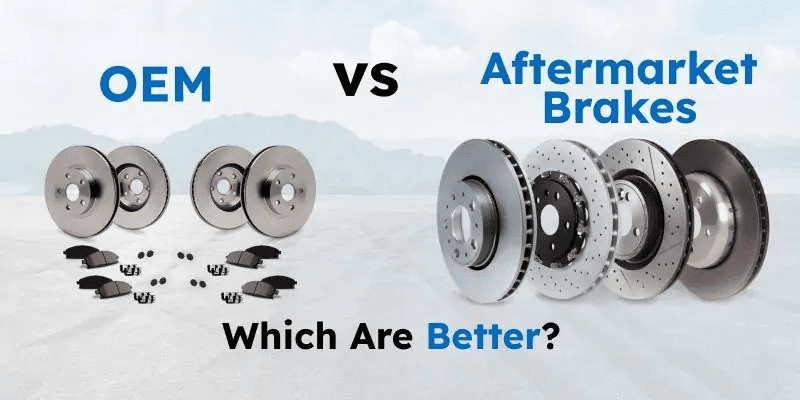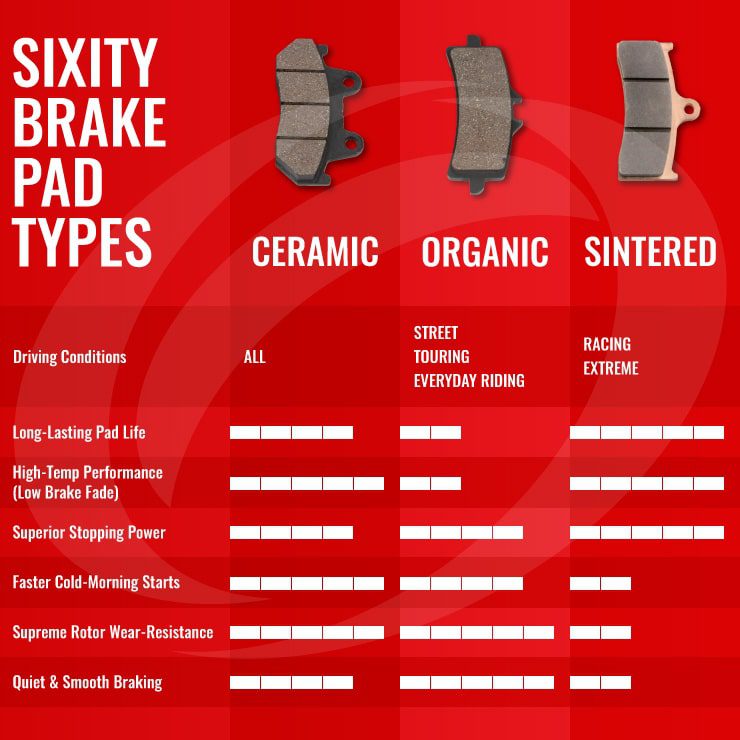Stop Faster, Handle Better, and Protect Your Ride—A Complete Guide to Choosing and Installing High-Performance Brake Pads!
1. Why Upgrade to Performance Brake Pads? ⚠️
Stock brake pads prioritize low noise and dust over performance. Upgrading offers:
- Shorter stopping distances: Critical for spirited driving or emergencies.
- Reduced brake fade: Handles high heat during track days or mountain descents.
- Better pedal feel: Firmer, more responsive braking.
- Longevity under stress: Withstand aggressive use without cracking.
Key Stat: Performance pads can lower stopping distance by 10–20% vs. OEM pads (SAE study).

2. Types of Performance Brake Pads 🧩
| Type | Best For | Pros & Cons |
|---|---|---|
| Ceramic | Daily driving, low dust | Quiet, long-lasting, $$$ |
| Semi-Metallic | Towing, track use | Excellent heat resistance, noisy |
| Organic | Light-duty, eco-friendly | Affordable, eco-friendly, wears fast |
Pro Tip: Match pad type to your driving style—ceramic for commutes, semi-metallic for performance.

3. Signs You Need an Upgrade 🚨
- Brake fade: Pedal feels spongy after repeated hard stops.
- Excessive dust or squealing: Stock pads struggling under load.
- Track or heavy towing: OEM pads overheat quickly.
- Upgraded power: More horsepower demands better braking.
Warning: Performance pads may require bedding-in and compatible rotors!
4. Step-by-Step Installation Guide 🔧
Tools Needed:
- Jack, jack stands, lug wrench.
- C-clamp or brake piston tool.
- Torque wrench (critical for caliper bolts).
- Brake cleaner, gloves, and anti-seize grease.
Steps:
- Remove wheels and calipers (hang calipers with wire—don’t stress hoses).
- Compress pistons to fit new, thicker pads.
- Install pads with anti-rattle clips and grease shims.
- Reassemble and torque bolts to spec (25–35 ft-lbs for most cars).
- Bed-in pads: 5–10 hard stops from 40–10 mph, then cool.
5. Performance vs. OEM: Key Differences 📋
| Factor | Performance Pads | OEM Pads |
|---|---|---|
| Stopping Power | Higher initial bite | Gradual, linear response |
| Noise | Can squeal when cold | Quiet |
| Dust | Varies (ceramic = low) | Moderate |
| Rotor Wear | May accelerate wear | Gentle on rotors |
| Cost | 80–200/axle | 50–150/axle |
6. Top Performance Brake Pad Brands 🏆
| Brand | Best For | Avg. Cost/Axle |
|---|---|---|
| Hawk | Track/street | 120–200 |
| EBC | Towing, SUVs | 100–180 |
| Ferodo | High-performance | 150–250 |
| Power Stop | Daily drivers | 80–150 |
7. Common Mistakes to Avoid 🚫
- Skipping rotor prep: Resurface or replace grooved/damaged rotors.
- Mixing pad types: Never pair ceramic front with semi-metallic rear.
- Ignoring brake fluid: Upgrade to high-temp fluid (DOT 4/5.1) for track use.
- Forgetting to grease: Anti-seize on caliper pins prevents sticking.
8. Cost of Neglect 💸
- Warped rotors: 200–500 per axle.
- Caliper damage: Overheated pistons seize (300–600 repair).
- Accidents: Increased stopping distance risks collisions.
Pro Tip: Pair pads with slotted/drilled rotors for maximum heat dissipation.
9. FAQs ❓
Q1: Can I install performance pads myself?
A: Yes—if you’re mechanically inclined. Otherwise, pros charge 100–200 labor.
Q2: Do performance pads work in winter?
A: Semi-metallic pads lose bite in extreme cold; ceramic performs better.
Q3: How long do performance pads last?
A: 20k–40k miles (less with track use).
Q4: Will they damage my rotors?
A: Semi-metallic pads wear rotors faster; ceramic is gentler.
Q5: Are carbon-ceramic pads worth it?
A: For supercars only—they cost $1,500+/axle and need specific rotors.
10. Pro Tips for Longevity 💡
- Clean wheels weekly: Brake dust corrodes rims.
- Avoid resting foot on pedal: Causes drag and heat buildup.
- Inspect annually: Cracks or thinning pads mean replacement time.
Graphic 5: Brake pad wear indicators (🔍📏).
11. Free Brake Upgrade Checklist 📝
[🔗 Download Your Free PDF Here]
Includes:
- Bed-in procedure steps.
- Compatible rotor recommendations.
- Brake fluid flush guide.
Expand Your Automotive Knowledge 📝
Explore 500+ Free Expert-Curated Guides
🚗 Learn New Skills
From basic maintenance to advanced repairs — clear, actionable tutorials for every skill level.
🌍 Access Anywhere
Mobile-friendly guides with HD visuals. No downloads required.
- Guides & Tutorials
- Car Maintenance 101
- Diagnostics & Troubleshooting
- Seasonal Maintenance
- Budget-Friendly Repairs
- Electrical Systems Guide
- Car Safety & Reliability
- Tools & Product Reviews
- Routine Maintenance
- Car Modifications & Upgrades
- Buying/Selling Guides
- Eco-Friendly Car Care
- Advanced Repairs
- Car Laws & Compliance
- Emergency Repairs
- Future Car Tech


